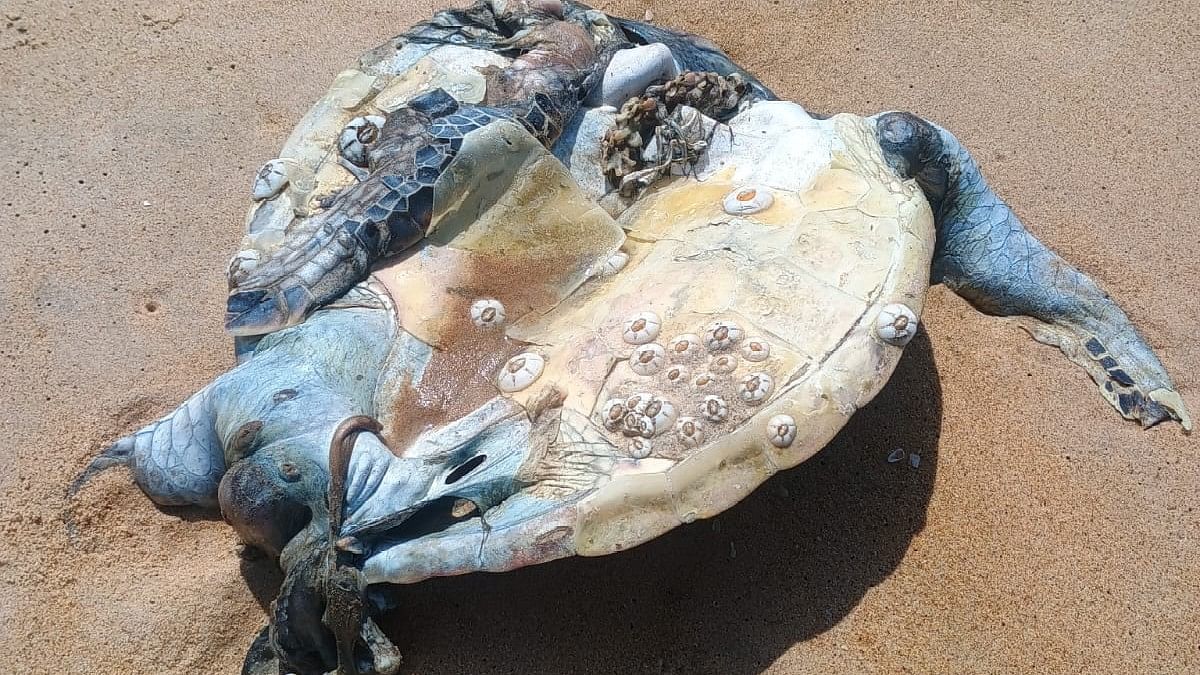
Carcass the turtle that was washed to the shores of Honnavar recently.
Credit: Forest Department
Hubballi: Carcasses of five critically endangered Olive Ridley Sea Turtles (ORST) and a green turtle, were washed to Honnavar and Karwar's shores in the last 30 days. This year the Uttara Kannada district has reported the death of at least 24 turtles.
While carcasses of a green turtle and an ORST washed to the shores of Honnavar on Friday, the highly decomposed remains of ORST were reported on Karwar beach on Saturday. Two months ago, the carcass of hawksbill sea turtles was also reported in Karwar.
Forest Department officials and experts haven't been able to identify the exact reason for the death of sea turtles as the carcasses were in highly decomposed condition. The postmortem reports conducted in earlier deaths reveal that turtles died after consuming plastic/gunny bags, injuries caused due to propellers of deep sea fishing boats, entanglement in fishing nets, and pulmonary infections.
In Karnataka, the beaches of Karwar and Honnavar have a high number of ORST nesting sites, which is protected as scheduled-I species under the Wildlife Protection Act of 1972. Female turtles arrive on these beaches every year between December and May to lay eggs.
Data collected by ReefWatch Marine Conservation, an organisation working on Marine Megafauna, Ghost net retrieval and outreach program, say that in Uttar Kannada district, nearly 90 per cent of the turtle deaths reported on the shores of Karnataka are due to “human interventions and habitat destruction”.
“Over the years, we have reported the death of turtles due to net entanglements, plastic ingestion, blunt-force trauma, and pulmonary infections” said Dr Manohar Nagre, Marine Veterinarian from Reefwatch Organisation.
Marine Biologist Prakash Mesta says the turtles usually recce the beaches in October and November to find a suitable place for laying eggs. “The turtles are regularly sighted near islands on the coast of Uttara Kannada district. However, due to bull trawling, and deep sea fishing during their breeding season, the turtles get caught in nests or hit by the propellers of boats resulting in injuries. As these turtles need to come to the surface for breathing once every five hours, injuries result in their immobility and ultimately end in death.”
Karwar Deputy Conservator of Forest Ravishankar said that the death of almost all the 24 turtles (except the six that died this month) was due to external factors.
“We are conducting workshops and reorientation programmes to fishermen on how to handle and release turtles caught in nets. Turtles are not consumed in this part of the world. Fishermen usually release the turtles back to sea. If an injured turtle is released back to sea their survival chances are less,” he said.